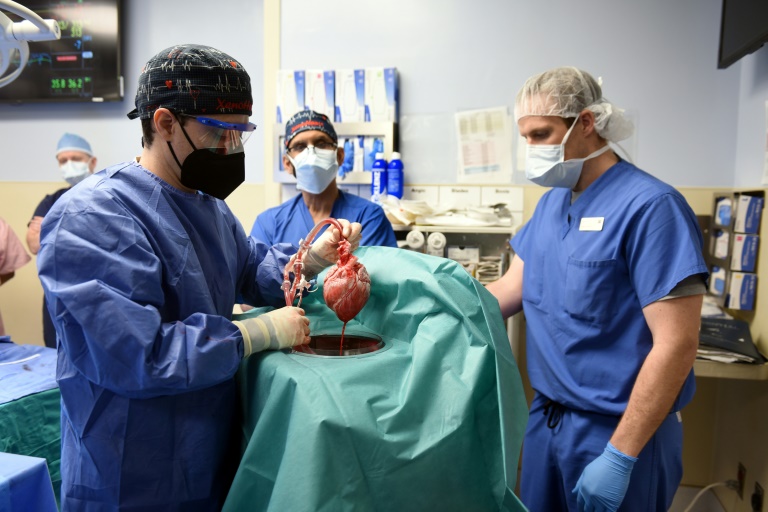Unstable ‘fluttering’ predicts aortic aneurysm

This handout photo released by the University of Maryland School of Medicine on January 10, 2022 shows surgeons performing a transplant of a heart from a genetically modified pig to patient David Bennett, Sr – Copyright AFP/File JIM WATSON
Demonstrating a 98 percent accuracy, a new metric has predicted aneurysm development on average three years prior to occurrence. This presents a potentially useful, physics-based medical diagnostic assessment tool to help improve the lives of patients. An aortic aneurysm is a deadly condition that often causes no symptoms until it ruptures.
Currently, a doctor will estimate chance of rupture based on risk factors (such as age or smoking history) and the size of the aorta. If the aorta starts to grow too quickly or become too large, then a patient often will undergo a surgical graft to reinforce the vessel wall, an invasive procedure that carries its own risks. The new method provides a workable alternative.
This research breakthrough is based on researchers discovering the physical mechanism underlying aortic aneurysm. The researchers were able to forecast abnormal aortic growth by measuring subtle “fluttering” in a patient’s blood vessel. As blood flows through the aorta, it can cause the vessel wall to flutter. The researchers say this is similar to how a banner ripples in the breeze.
Under these conditions, when an artery swells to form an aneurysm, the arterial wall weakens. Consequently, the interaction between this weakened wall, high blood pressure, large aortic size, and so on causes the artery wall to flutter irregularly. This was based on extensive mathematical work and analyses.
The Northwestern University scientists were the first to quantify this flutter instability, which signals need for intervention before artery ruptures. While stable flow predicts normal, natural growth, unstable flutter is highly predictive of future abnormal growth and potential rupture, the researchers found.
According to lead scientist, Neelesh A. Patankar: “The fundamental physics driving aneurysms has been unknown. As a result, there is no clinically approved protocol to predict them. Now, we have demonstrated the efficacy of a physics-based metric that helps predict future growth. This could be transformational in predicting cardiac pathologies.”
The researchers have named this phenomenon the “flutter instability parameter” (FIP). To calculate a personalized FIP, patients only need a single 4D flow magnetic resonance imaging (MRI) scan. If a patient is at risk, a physicians could potentially prescribe medications to high-risk patients to intervene and potentially prevent the aorta from swelling to a dangerous size.
To quantify the transition from stability to instability, the researchers combined blood pressure, aorta size, stiffness of the aortic wall, shear stress on the wall and pulse rate. The resulting number (or FIP) characterizes the exact interaction between blood pressure and wall stiffness that ultimately triggers fluttering instability.
To test the new metric, the researchers reviewed 4D flow MRI data from 117 patients who underwent cardiac imaging to monitor heart disease and from 100 healthy volunteers. Based on this MRI, the researchers assigned each patient a personalized FIP.
The research has been published in the journal Nature Biomedical Engineering, titled “Blood-wall fluttering instability as a physiomarker of the progression of thoracic aortic aneurysms.”
Unstable ‘fluttering’ predicts aortic aneurysm
#Unstable #fluttering #predicts #aortic #aneurysm





